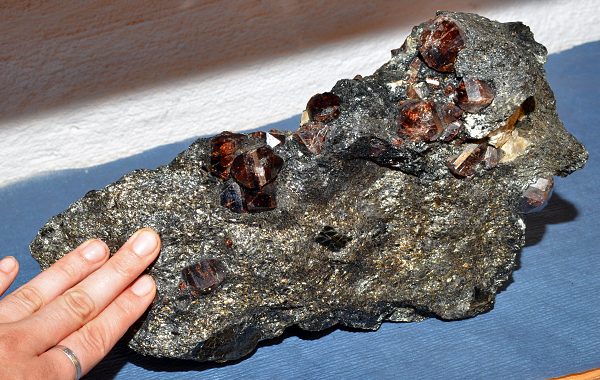New research by Trinity scientists reveals that zircon crystals – the oldest pieces of rock on Earth – were possibly formed in asteroid impact craters some four billion years ago, rather than via plate tectonics as was previously believed.
Zircon crystals, which are the oldest fragments of early Earth and approximately the width of a human hair, have become a matter of major debate in the science community, most notably when the study of them revealed the presence of water on the surface of Earth whilst they formed – a key ingredient to the origin of life.
Based on suggestions made by a group of geologists, Trinity researchers pursued the study of a younger impact crater to see if zircon crystals similar to those from four billion years ago could have possibly formed in that environment.
It was previously suggested by other researchers that the crystals formed due to tectonic plates on the Earth’s surface colliding with each other, however current evidence suggests that plate tectonics did not occur in early Earth, leaving a question mark over the origins of the tiny crystals.
In 2014 with the support of the Irish Research Council (IRC) and Science Foundation Ireland (SFI), the team of researchers collected thousands of crystals from an impact crater site in Canada that holds the best-preserved large impact crater on Earth and the planet’s second-oldest confirmed crater, at almost two billion years old.
Analysis of these crystals at the Swedish Museum of Natural History in Stockholm showed that the crystal compositions were indistinguishable from the ancient set.
PhD researcher in Trinity’s School of Natural Sciences, Gavin Kenny, is first author of the article which explains these findings, and which has just been published in leading international journal Geology. Commenting in a press release, he explained that while there is “a lot we still don’t fully understand” about the crystals and early Earth, scientists and geologists “may now be able to form a coherent story of Earth’s early years”. He goes on to further clarify that this fits with the scientific theory that the Earth recieved “far more frequent bombardment from asteroids” than in “relatively” recent times.
Kenny recently travelled to the annual Lunar and Planetary Science Conference, held in March in Houston, Texas, where he says the group’s findings were met with “a lot of enthusiasm” from the community, and that the geologist group who had suggested the possibility of a link between asteroidal impacts and the crystals were “very happy” to see a match between the chemistry of the crystals found in Canada and the older crystals.







